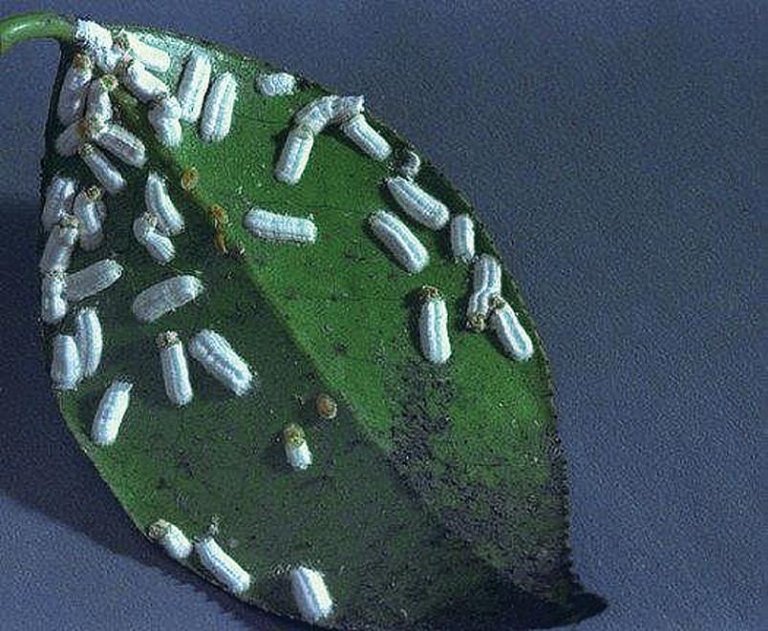Back
Here's some low-maintenance garden ideas so you have more time to relax

As Mark was pulling the patio chairs out of storage this spring, he made a promise to himself to finally hang the hammock. It is time to do some swinging in the cool shade of a four-metre-high birch on hot summer afternoons.
It is now early summer, and thoughts of gardeners and non-gardeners alike turn to taking it easy. On that score, we can be of assistance. We have created a list of stuff that you can do to minimize the work and maximize the hammock time in your garden this summer:
Use native plants.Less water, disease and insect pests. Think about this – long before the Europeans arrived on our shores there were a lot of plants happily growing their hearts out without human intervention. The Native People of Canada, to their credit, left well enough alone, harvesting the odd herb or peeling a little bark here or there for culinary or medicinal purposes. But at no time did they reduce the population of any plant species to the extent that it became extinct. All of that changed rather dramatically about 500 years ago.
The plants that have survived since then are true ‘survivors’ with a tolerance for severe weather, pests, disease and drought.
There are lots of native plants now available at garden retailers, who have responded to consumers’ demands for these plants in recent years with the introduction of many nursery grown ‘natives’.
Here is a short list of our favourites:
For sun:
(Perennials)
Blanketflower (Gaillardia)
Butterfly weed (Asclepias)
Coneflower (Echinacea)
Joe-pye weed (Eupatorium)
Yarrow (Achillea)
Beebalm (Monarda)
Serviceberry (Amelanchier) – shrub/tree
For shade:
(perennials)
Lily of the valley (Convallaria)
Solomon’s seal (Polygonatum)
Canadian ginger (Asarum)
Marsh marigold
Trilliums
Bloodroot
Ferns including Christmas, Cinnamon, Royal, Wood and Marginal Wood ferns
Hemlock (evergreen tree)
Sugar maple (shade tree)
There is more to carving time out of your schedule for loafing. Consider this:
Water deeply and less often.Invest in a quality lawn/garden sprinkler that covers a large area but does not spray water high into the air, where much of it is lost to evaporation. We like the circular sprinklers that do not have the ‘halo’ effect of the old impact sprinklers.
- Apply no less than one inch of water at a time and water less often (place a straight edged container under the sprinkler to measure the amount applied).
- Hand water newly planted annuals and perennials as the soil dries to 3 to 5 cm below the surface of the soil
- Do not water your lawn at all. If we get into a drought situation, which is highly likely in July, your lawn will turn brown and go dormant, but it will not die. It will emerge from dormancy in August when evening temperatures drop and morning dew heavies up. In the meantime, you have cut your lawn mowing time dramatically.
- Deep watering encourages deep, drought resistant roots.
- Water the garden in the morning to avoid wasting water to evaporation. The water will seep deep into the ground.
- Use a rain barrel – we have 4 of them on the go and they save us a ton of time dragging the hose out to water containers.
- Use a soaker hose. The ‘bleeding hose’ that is made of recycled rubber or the new ‘flat fabric’ ones are great at delivering water to the root zone of your plants – where it is needed most. The new nylon fabric products are tougher and stand up to hard use longer.
Add organic matter to the top of your soil. By insulating the soil from the drying effects of the sun, watering is dramatically reduced. We prefer shredded cedar bark mulch but straw works very well, when laid down about 30 cm thick (this works great in the veggie garden especially around tomatoes).
Other tactics that will reduce the demands on your time this summer in the garden are:
- Cut your lawn at 6 to 8 cm high with a mulching mower.
- Plant drought-tolerant plants (see the native plant list above) and look for other non-native species that will thrive in your garden without a lot of attention on your part. Ask at your garden retailer.
- Cut down weeds when they are young with a sharp hoe– much easier to do it now than to allow them to grow into small trees – now removing them, THAT is work. And time consuming.
- Work in the morning when it is cool, when your energy level is highest and discipline yourself to quit when it gets hot.
- Work in the shade – do morning work on the west side of your house and afternoon on the east side, if you have this option.
- Hydrate. Take a bottle of tap water with you everywhere you go in the garden. Sip it frequently. By doing so, you will sustain your energy level and feel good all day.
- Sharpen your cutting and digging tools. Put your shovel, spade and hoe on the grinder in your workshop or see the guy who travels around the neighbourhood peddling his sharpening services. The guy with the bell, not the ice cream truck. Keep an edge on your tools by running a garden file over the blade every time you use them.
The difference between a low maintenance garden and an ‘intensive care’ garden is careful planning, timing, quality tools well maintained and attitude.
Mark Cullen is an expert gardener, author, broadcaster, tree advocate and Member of the Order of Canada. His son Ben is a fourth-generation urban gardener and graduate of University of Guelph and Dalhousie University in Halifax. Follow them at markcullen.com, @markcullengardening, and on Facebook.
By: New West Record
GuidedBy is a community builder and part of the Glacier Media news network. This article originally appeared on a Glacier Media publication.
Location
Topics
Related Stories
-
Design & Renovations
Spring & Summer Decor on a Budget: How to Create a Beautiful Home for Less
It's finally Summer, which means it's time to freshen up your home decor! But don't worry, you don't have to spend a lot of...
-
Home Decor Vancouver
Refreshing Your Home for Spring/Summer
There are many ways you can refresh your house for the spring/summer season. These projects can provide your house with the...
-
Home & Garden
Spring Cleaning Hacks
When the rain slacks off and the last of the snow is gone, it's time to open up the house and clean! While spring may feel like...
-
Home & Garden Abbotsford
How to Create a Zero-waste Household
Reducing your household waste can help the planet in many ways. You may even be able to eliminate your waste completely if...
-
Home Furniture & Decor Abbotsford
Working from home? 4 tips for your home office setup
Working from home can be a better experience for you with the right office setup. Setting up your in-home office correctly can...
-
Cleaners
5 Cleaning Tips That Will Make Your House Sparkle
If you’re getting ready for spring cleaning or another big home cleaning project, you’ll want to sanitize your living space as...
-
Home Decor
Houseplants You Absolutely Want to Have in Your House
Adding some plants to your interior setting can give your home a greener feel while promoting greater tranquility throughout...
-
Design & Renovations Whistler
True To Its Past
The romantic and rounded form of the traditional log cabin, once a staple in Whistler’s architectural landscape, has seen its...
-
Home Furniture & Decor Burnaby
Create an Awesome Home Office Space on A Budget
A small home office doesn’t have to be expensive, but properly planning your space is important so it’s a place you actually...
-
Design & Renovations Vancouver
How To Decorate Your Rental So It Feels Like Home
The right bath and hand towels can add energy to a room. Photo: Barb Lunter Older rental suites can sometimes be plagued...
-
Design & Renovations Vancouver
Spring Decor Tips to Refresh Your Space
Fresh flowers, topical coffee table books and garden ornaments used cleverly indoors are a few ways...
-
Home & Garden Vancouver Island
House Beautiful: 120-year-old Rattenbury home gets new life in Rockland
The owners of this handsome 120-year-old home used to live in a custom-designed, ultra-modern house on the waterfront near the...
-
Design + Build
HOME IDEAS: Lift yourself out of post-holiday funk with DIY projects
Taking down the holiday decorations is never a fun task. Once they are all removed the house can look a little bare. In...
-
Garden & Décor Burnaby
How to garden if you don't have your own garden
Paying $160 for the year was a pretty good price for a vacation property. Only eight minutes from Ben’s downtown apartment,...
-
Home & Garden
New plants worth trying
The horticulture industry is gradually catching up with the current home trend of compact living. Smaller, more refined and...
-
Garden & Décor Coquitlam
Five simple DIY weekend projects that can improve your home’s curb appeal
Your front door is the first thing you see when you get home at the end of the day and it’s the first impression your home...
-
Flooring
HOME IDEAS: Carpet tiles give your floor needed versatility
Environmental consciousness is definitely a priority these days, and it’s interesting to see how it’s spilling into the...
-
Garden & Décor
DESIGN IN NATURE: Garden pests can be dealt with naturally
Everyone should know that using cosmetic pesticides is banned in all three North Shore municipalities. Using these...
-
Home & Garden
Tips to stay tick-free
The first day of spring is a welcome sight for more than just the people of Kamloops – it's a big moment for the...
-
Design & Renovations
Compile a reno or building wish list
If you're planning on renovating your home or building a new one you undoubtedly have some definitive ideas on what you'd like...
-
Home Furniture & Decor Delta
It just takes a little determination to design a gallery wall
Gallery walls, also called moment walls, are one of today's hottest home decor trends. Gallery walls enable homeowners to...
-
Cleaners Burnaby
‘Uber for laundry’ moves into Burnaby. Because people are that lazy
Look, I know the headline for this blog seems harsh, but I’m actually not judging. Just stating a fact – people in our...
-
Garden & Décor
HOME IDEAS: Create a guest room that visitors will want to come back to
Are you expecting visitors over the summer holidays? There’s something special about creating a warm and inviting living space...
-
Bathrooms
HOME IDEAS: Bathe your bathroom with simple, modern flourishes
If you were fortunate enough to visit this year’s BC Home + Garden Show here in Vancouver, you may have come home with some...
-
Flooring
Family company built from the floor up
Many family businesses are built from the ground up, but Woodopolis Home Centre literally started with hardwood...
-
Home & Garden Vancouver
DESIGNER FILES: Wallpaper covers all bases for your interior
If your last interaction with wallpaper was the unforgettably tacky, impossible-to-remove and overused versions that ran...
-
Design & Renovations Delta
Rooms do double duty in smaller homes
Many homes do not have space for guest rooms, play areas and home theatres that are possible in homes with substantial square...
-
Garden & Décor New Westminster
Let's give a shoutout to these multi-tasking plants
When is a garden-variety plant more than a plant? When it provides multiple functions. Take flowering trees and shrubs that...
-
Garden & Décor Burnaby
Veggie creep is one of the next big things in gardening
Want to be on the leading edge of your gardening community? We have spent a lot of time forecasting the next big thing for the...
-
Home Furniture & Decor Vancouver Island
Debbie Travis: Benefits of benches include extra seating, storage
Dear Debbie: I was debating with a friend what was an “extra” piece of furniture she couldn’t do without. We agreed that a bed,...
-
Contractors Prince George
Why this Prince George contractor settles for nothing but the best
Sponsored Content “I’m very passionate,” says Robert Rivey, “and I suppose I always do my best.” This sort of...
-
Garden & Décor
AROUND THE HOUSE: Got fruit trees? Sweet!
You really don’t have to be an expert to prune fruit trees. All it takes is a little common sense and a few helpful hints. As a...































